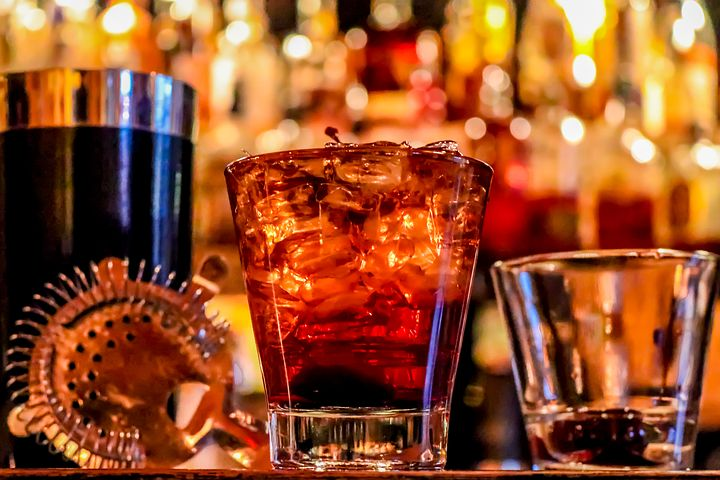
Is Happy Hour Making You Look and Feel Older than You Should?
As we begin the slow exit from lockdowns and limited social gatherings compliments of a global pandemic, one skill that more than a few of us may have honed over the last two years is drinking. Many of us have turned pro in our abilities to knock back more than a few drinks.
What’s the harm in a few drinks every now and then?
The answer lies in your opinion of “a few drinks” and “every now and then.” We’re not talking about becoming an alcoholic, but you may not realize how much alcohol makes you look and feel older.
The Link
A study published in the Journal of Epidemiology & Community Health concludes that high alcohol consumption predicts the early development of visible age-related signs. The study also shows that heavy alcohol use is associated with generally looking older than one’s actual age.
We realize that the study uses high and heavy alcohol consumption in the results, but there are degrees to looking older like almost everything else. You may not drink enough to look like you’re 90, but would it bother you to appear 5 or 10 years older? That’s what we thought.
Have you ever noticed a guy with a crease in his earlobes? It’s a tell-tale sign of aging and happens earlier to people who drink. You don’t want creased earlobes, do you?
Alcohol puts additional strain on your body by promoting the release of stress hormones. It’s no secret that stress ages a person. If you’ve gone on a bender or two in your life, you also know that drinking affects your digestive system in a couple of different ways. We’ll skip some less comfortable details and discuss how alcohol makes it harder for your body to absorb nutrients, including proteins and carbohydrates. That’s why you crave those things when hungover.
Whenever you drink, you stress your body and deprive your system of vital nutrients.
Looking Older
A single night of drinking dehydrates your skin enough to create visible fine lines and wrinkles.
Does your face turn red when you drink? Alcohol causes dilation of blood vessels on the skin’s surface, resulting in flushing or redness. If you dilate those vessels enough, they will burst and create red and purple veins across your face. When it happens on your nose, it’s called a “gin blossom” for obvious reasons.
For occasional drinkers who want protection from dehydration, alternate a glass of water between cocktails. This hydration method is also an excellent way to pace your drinking and avoid overconsumption.
Hydrating post-night-out does rejuvenate, but cutting back on the booze gives your skin a better chance at regeneration. Not all skin damage from alcohol is reversible.
If dry, wrinkly skin and broken blood vessels aren’t enough, the sugar in alcohol can also disrupt your microbiome, causing acne, rosacea, psoriasis, or other skin conditions to worsen.
Feeling Older
Nothing is worse than having a few drinks with dinner, only to end up tossing and turning in bed all night. We’re talking about restless sleep, not the good kind of tossing and turning with a partner.
Drinking may make you feel drowsy, and according to a National Sleep Foundation report, roughly 20% of Americans use booze as a sleep aid. While it helps you fall asleep, alcohol disrupts sleep by reducing REM (rapid eye movement) sleep. REM is the vital recovery part of a quality night’s sleep.
Alcohol also suppresses breathing and induces sleep apnea. Have you ever seen a tired person that looked healthy or was on top of their game at work? Nope!
A few drinks affect your liver too. When you drink, the liver works hard to detoxify your body from the alcohol and creates an abundance of free radicals. By producing a load of free radicals without enough antioxidants to combat them, oxidative stress results. Oxidative stress damages DNA and proteins, leading to age-related chronic conditions like diabetes and heart disease.
Once again, if that’s not enough, booze makes you fat. Not only do those cocktails lack any nutritional value, but they’re also full of sugar and empty calories that make you eat more.
Unfortunately, your bloody mary’s with a celery stalk, olives, and a slice of bacon only seem like a meal.
Cutting Back
According to a study published in JAMA Psychiatry, the percentage of American adults regularly consuming alcohol rose 8 points from 65% in 2002 to 73% in 2013. We can only imagine what the numbers are post-pandemic!
Instead of finding an excuse to drink, why not consider trying to cut back on the booze at least temporarily? Start by tracking how many drinks you consume on any given night out, and then determine the number for a regular week. We bet you’ll find that you drink more than you realize.
How many drinks can you cut back this week? Could you go cold turkey for a month? Whatever you decide, your body will thank you for it.
Take care, even down there.
Share this Post